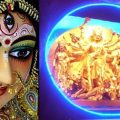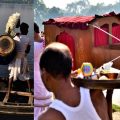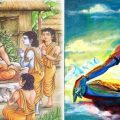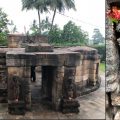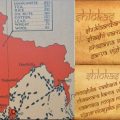Navaratri: Significance of the Nine Days of Celebrating Shakti
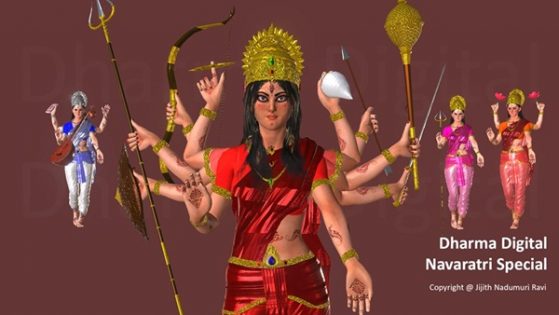
Not many people go deep into the richness of the tradition of the celebration of Navaratri / Dussera / Durga Puja. For most people it is just a few holidays. In many apartments and gated communities it is celebrated indeed, but mostly with some singing, dancing and stage performances accompanied by Bollywood songs. These indeed increase the joy and happiness.
But it is important that we pass over the richness of the tradition to our younger generation and also to the least informed among us.
Hence I have created this write up, along with some of my creative works, in the form of paintings, animations and holograms (that can be seen as ‘virtual avatars’ interacting with you, in the real world).
Since this festival itself is celebrated with greatest variety in the southern, northern, eastern and western parts of India, with the prominent traditions being in Bengal, South India and the rest of India, there will be many amazing variations in the rituals, pujas and forms of the goddesses worshiped on each of the 9 or 10 days. In general, Navaratri (or 9 nights of festivities) spanning 10 days, occur four times in a year for each season. There is also a Vasanta Navaratri celebrated in March-April. Vasanta is spring season. Most popular Navaratri is the post monsoon, autumnal Navaratri, known as the Shaaradiya Navaratri in the month of Ashvina. Shaarada here signifies the Sharad Rtu (autumn season) and also the goddess in white robes (Sarasvati as well as Durga in white robes).
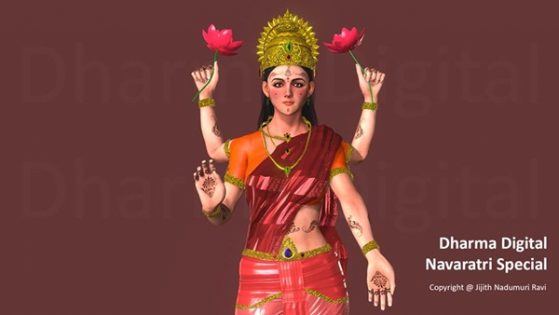
The Shaarada Navaratri commences on the first day (Pratipada) of the bright fortnight (Sukla Paksha) of the lunar month of Ashvini. In this festival, mainly the goddess Durga is worshiped. Saraswati and Lakshmi, Ganesha, Kartikeya, Shiva, Sri-Raama and Sri-Krishna are also revered. Reverence for Rama with festivities like Rama Leela is prominent in Ayodhya and regions west of it. Reverence for Durga and Durga Puja is prominent in regions in and around West Bengal. Reverence for Sarasvati and Sarasvati Puja is prominent in Kerala and parts of Karnataka. In Tamilnadu, Karnataka, Andhra and Telengana the dolls of devatas (Golu / Gollu / Bommala Koluvu / Gombe Habba / Gombe totti) are kept in Puja rooms in many rows and columns. In Telugu homes Bathukamma flower decoration tradition also is found. In Maharashtra Kaali or Durga is worshiped on days 1 and 2, Lakshmi on days 3,4, 5 and Sarasvati on days 6,7,8 and 9.
However, despite this diversity, the central theme of the festival is ‘victory’ (vijaya) over evil or ignorance, be it Rama’s victory over Raavana, Durga’s victory over Mahishasura or Sarasvati’s victory over ignorance.
Here is a summary of the 10 days with the devi bhaava that is worshiped on each day and the rituals performed in various parts of Bharatavarsha, on Navaratri (September-October 2019).
Day 1
Tithi – Sukla Paksha Prathama (Pratipata)
Devi Bhaava – Shailaputri
It is the day to do the Ghatastapana, Chandra Darshana and Shailaputri Puja. Ghatastapana is the invocation of Devi’s Shakti into Ghata and placing it properly. Ghata symbolizes the goddess and the whole Universe and is made of clay or some metals like copper. Chandra Darshana is the seeing of the crescent moon at night. A day after Amavasya, the lunar crescent on the Prathama day will be very thin and beautiful to sight.
Shailaputri or Paarvati is the bhaava of the goddess in the form of the daughter of Himavan, the mountain (shaila). She is the reincarnation of Daksha putri Sati in the form of Shaila Putri Parvati. Her planet is Moon (Soma) and favorite flower is Jasmine. She rides a bull, imitating her love, viz. Shiva. Hence she is also called Vrshaaruuda. She has two hands, carrying a trident (tri-shula) in one hand and a lotus in the other hand. She is also known as Hemavati and as Haimavati.
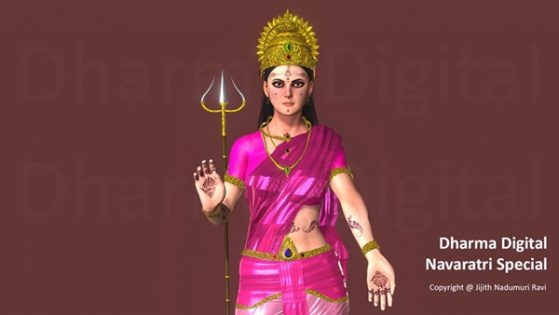
Day 2
Tithi – Sukla Paksha Dwitiya
Devi Bhaava – Brahmachaarini
It is the day to do the Brahmachaarini Puja. Brahmacharini is the virgin (kanya) form of Parvati when she did long tapas (penance) to get Shiva as her husband. She spent 1000 years eating only flowers and fruits and another 100 years eating only leaves and slept on bare ground. Those seeking Moksha, wanting to be an ascetic and wish no luxuries in life, they worship Brahmachaarini. Her planet is Mars (Mangala) and favorite flower is Jasmine. She walks on bare feet. She has two hands, carrying a japa-maala (rudraaksha) in one hand and a kamandalu (pot) in the other hand.
Day 3
Tithi – Shukla Paksha Tritiya
Devi Bhaava – Chandraghanta
This day is also known as Sindur Tritiya where the great goddess is worshiped with Sindur (vermilion) to signify her marriage with Shiva. She is now a happily married woman, having obtained her love Shiva as her husband after great tapas. She adorned her head with the lunar crescent (chandra), like her husband Shiva. Hence she is known in this form as Chandraghanta.
As per some, it is worn on her forehead and looked like a bell (ghanta). She rides on a tigress instead of the bull. She has ten hands. She carries Trishula, Gada, Sword and Kamandalu in her four left hands. She carries lotus, arrow, dhanush and rudraksha (japa-maala) in her right hands. Her main (5th) left hand is in Varada Mudra and her main (5th) right hand is in Abhaya Mudra. Varada Mudra is the boon-giving form of the hand. Abhaya Mudra is rescue-giving form of the hand. Her planet is Venus (Shukra) and favorite flower is Jasmine. She symbolizes defensive warfare for the protection of the devotees and of those following Dharma.
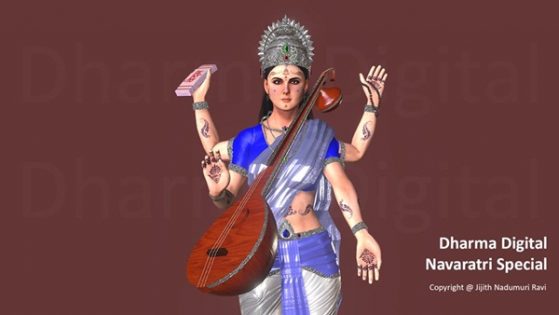
Day 4
Tithi – Sukla Paksha Chaturthi
Devi Bhaava – Kushmanda
Kushmaanda is the form of the goddess as residing inside the spherical orb (anda) of the sun. She is worshiped as the energy or Shakthi of the sun, which radiates out as the solar energy. As Kushmaanda she is also the creator of the Universe. She triggers the creation of the universe (Brahmaanda) through her laughter or just by flashing a little smile and finally creates it using her Shakti (pure energy). She is having a golden hue and luminous and radiant like the sun. Her planet is Sun (Surya) and likes red colored flowers. She rides on a lioness. She has eight hands. She is thus called Ashta-bhuja. She likes the bali (sacrifice) of pumpkin (kushmanda) symbolizing the universe.
Day 5
Tithi – Sukla Paksha Panchami
Devi Bhaava – Skandamaata
Skandamata is the form of the goddess as the mother of Skanda (Kartikeya). Thus on this day the goddess assumes the form of a mother. Skanda is brother to Ganesha and is born to slay Taarakasura. He later became the commander in chief of the devatas. Skanda-maata’s planet is Mercury (Bhudha) and she like red color flowers. She rides over a ferocious male lion. She carries Kartikeya with six heads in her lap. She has four hands. In her upper hands are two lotus flowers. With one hand she holds Kartikeya and the other hand is kept in Varada Mudra. She is white complexioned. She also sits on a lotus and so also called Padmaasana.
In Bengal, the formal Durga Puja starts on this day, with rituals like Bilva Nimantrana. The festival begins with Mahalaya when dead relatives are remembered. In Maharashtra, goddess Lalita is worshiped.
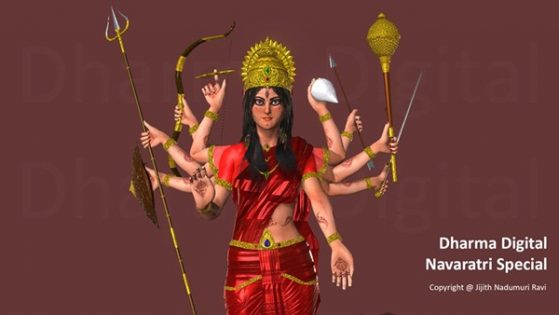
Day 6
Tithi – Sukla Paksha Shashthi
Devi Bhaava – Kaatyaayani
This is the day when the aavahan or invocation of goddess Sarasvati is done. The great goddess is worshiped on this day as Kaatyaayini, having born in the hermitage of sage Kata, who adored her as his own daughter. She wears orange robes and exudes great courage. Mahishasura sees the goddess first time in the form of Kaatyaayini as a warrior goddess. She rides over a majestic male lion. She carries a lotus and a sword in her left hands. Her right hands are in Varada and Abhaya Mudras. Her planet is Jupiter (Brihaspati) and her favorite flowers are red colored flowers, like rose.
On this day in Bengal Kalparambha, Akal Bodhon, Amantran and Adhivas are done. Local communities welcomes Durga and festivities are inaugurated.
Day 7
Tithi – Sukla Paksha Saptami
Devi Bhaava – Kaalaraatri
This is the day when Sarasvati puja begins. The great goddess is worshiped in the form of Kaalaraatri with her skin pitch black in color, instead of the white or golden hue. It is said that she removes her golden white outer skin to reveal her black inner skin. She wears white robes. She is the most fierce form of Durga. This is the form she took to kill the Asuras named Shumbha and Nishumbha. She rides a donkey. She has four hands. Her right hands are in Varada and Abhaya mudras. Her left hand carries a sword and a deadly iron hook (ankusha). She is also known as Shubhakarani. Her planet is Saturn (Shani) and her favorite flower is night blooming jasmine.
On this day in Bangal Navpatrika Puja and Kolabou Puja are done. Durga along with Lakshmi, Sarasvati, Ganeshan and Kartikeya are revered in community Pandals (stages) or in one’s own homes in the puja rooms.
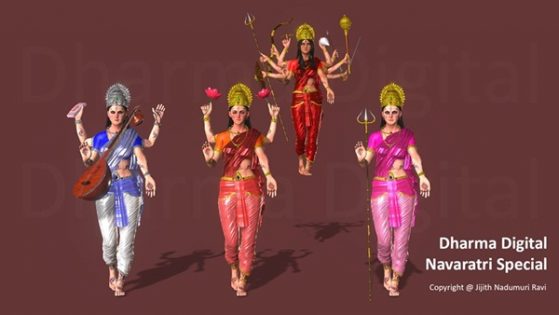
Day 8
Tithi – Sukla Paksha Ashtami
Devi Bhaava – Mahaa Gauri
This is the day named as Durgashtami, when the great goddess is worshiped in the form of Gauri (the white complexioned one). In this form, she is conceived as a Kumari of age sixteen or less, when she lived as the daughter of Himavan, near the vicinity of Kailasa. She rides on a bull. She has four hands. In her upper hands she carries a Tri-shula (trident) and a Damaru (drum). Her lower hands are in Varada and Abhaya Mudras. She adorns white cloths. She is compared with the white kunda flowers, white conch shell and also with the shiny white moon. She is also called Shvetaambara-dhara (the one who is in white robes). Her planet is Rahu and favorite flower is night blooming jasmine.
In memory of her, young girls of age sixteen or less is worshiped on this day as Mahagauri herself. This is called Kumari Puja. Sandhi Puja also happens on this day as Ashtami tithi turns into Navami. This year, Mahanavami will commence on this day.
In Kerala, on this day Durga in the form of Parvati is worshiped. Books and weapons are kept in temples or in puja room on the end of this day.
Day 9
Tithi – Sukla Paksha Navami
Devi Bhaava – Siddha-daatri Mahishasura Mardini
On this day Durga assumed the power of Brahma, Vishnu and Shiva and killed Mahishasura. Hence she is worshiped on this day as the killer of Mahishasura (depicted besides the goddess as getting killed). She represents offensive warfare for the protection of Dharma. She is also worshiped as Siddhi-daatri bestowing supernatural powers (siddhi). This is the day for Ayudha Puja and Navami Homa. On this day many people does the fasting (Paarana) of Navaratri.
In Kerala, on this day Lakshmi is worshiped. Balidan is done in Bengal on this day. In Maharashtra, this is Khande Navami when men worship tools and weapons.
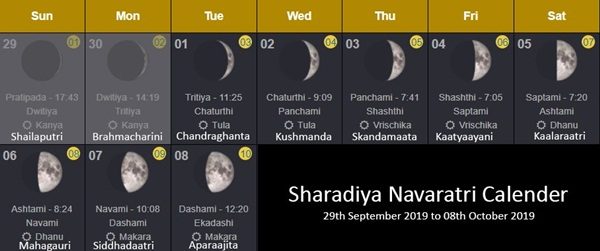
Day 10
Devi Bhaava – Aparaajita
Tithi – Sukla Paksha Dashami
Sri Rama worshiped the goddess in the Aparaajita (victorious / undefeated) form before he set forward from the battle camp to kill Raavana.
On this day, Durga moorthi vimajjana is done. Durga moorthi is taken in a procession and immersed in rivers or water bodies like Ganesha moorthis are immersed during Ganesh Puja. This is the day celebrated as Dussera and as Vijaya Dashami. It is celebrated to commemorate the victory of the goddess Durga upon Mahishasura and the victory of Dasarathi Rama upon Raavana Kaikasiputra.
In most of northern India effigy of Raavana, Kumbhakarna and Meghanaada is burned. The pot (ghata) symbolizing the goddess is kept in Puja rooms symbolizing the goddess. In Gujarat, the pot is made of clay and is called garbo (symbolizing the universal womb – garbha – the Hiranyagarbha). Garba dance is very famous there, where hundred to thousands of men and women sing and dance in circles with decorated rods (dandiyas) in their hands. The pot in Goa usually is made of copper. Goddess image is placed in a silver swing called Makhar and the festival is called Makharotsav. Karnataka celebrates Dussera (the tenth night) by lighting the temples with lamps. Dussera processions adored the roads and Mysore king worship his royal sword. An image of the Goddess Chamundeshwari is placed on a golden saddle (hauda) on the back of a decorated elephant and taken on a procession, accompanied by dance groups, music bands, decorated elephants, horses and camels. Households mount a copper or brass jar, filled with water, upon a small heap of rice kept on a wooden stool. Turmeric root, leaves of mango tree, coconut and major staple grains (usually eight varieties) are kept along with the pot. A lamp is lighted symbolizing knowledge.
On this day Sarasvati is worshiped in Kerala. Vijayadashami day is when children are initiated into writing (Vidyarambha). Books and other instruments of learning are taken back from temples and puja rooms on this day. In Tamilnadu, Vidyarambha is called Mutal Ezhuthu. Sindur utsav is done on this day in Bengal where women adore their foreheads with vermilion (sindur / kumkuma) and dress in Sari with red and white colors.
Note: Author is a former scientist who worked in ISRO (2001 to 2006) at SDSC-Sriharikota, as part of the Cryogenic team of GSLV. Took part in three GSLV launches, manning the liquid nitrogen Cryo Console of the Second Launch Pad (SLP) at Filling Control Canter and engaged in the GSLV count down process. Also worked briefly as part of the Chandrayan Study phase orbital simulations at VSSC-Trivandrum and got appreciation from Dr APJ Abdul Kalam during his visit at VSSC to meet young scientists. Involved in Mark 3 initial design phase, SRL (space capsule recovery) experiments and RLV (reusable launch vehicle) experiments.
He is currently engaged in the research of the geographical data present in the Mahabharata. In this capacity he has presented many papers in various international conferences. He owns a web-portal named AncientVoice containing 23,700 plus wikified pages on Veda Itihasa Puranas. He is also an artist and has visualized many scenes from the Mahabharata which was exhibited in different conference venues. Currently he is working in a leading software MNC focusing on creative research on Virtual Reality using devices like HoloLens. Combining this expertise with software technology he is engaged in creating Virtual Avataras of Itihasa personalities in Virtual Reality, Augmented Reality, Mixed Reality and Artificial Intelligence.

